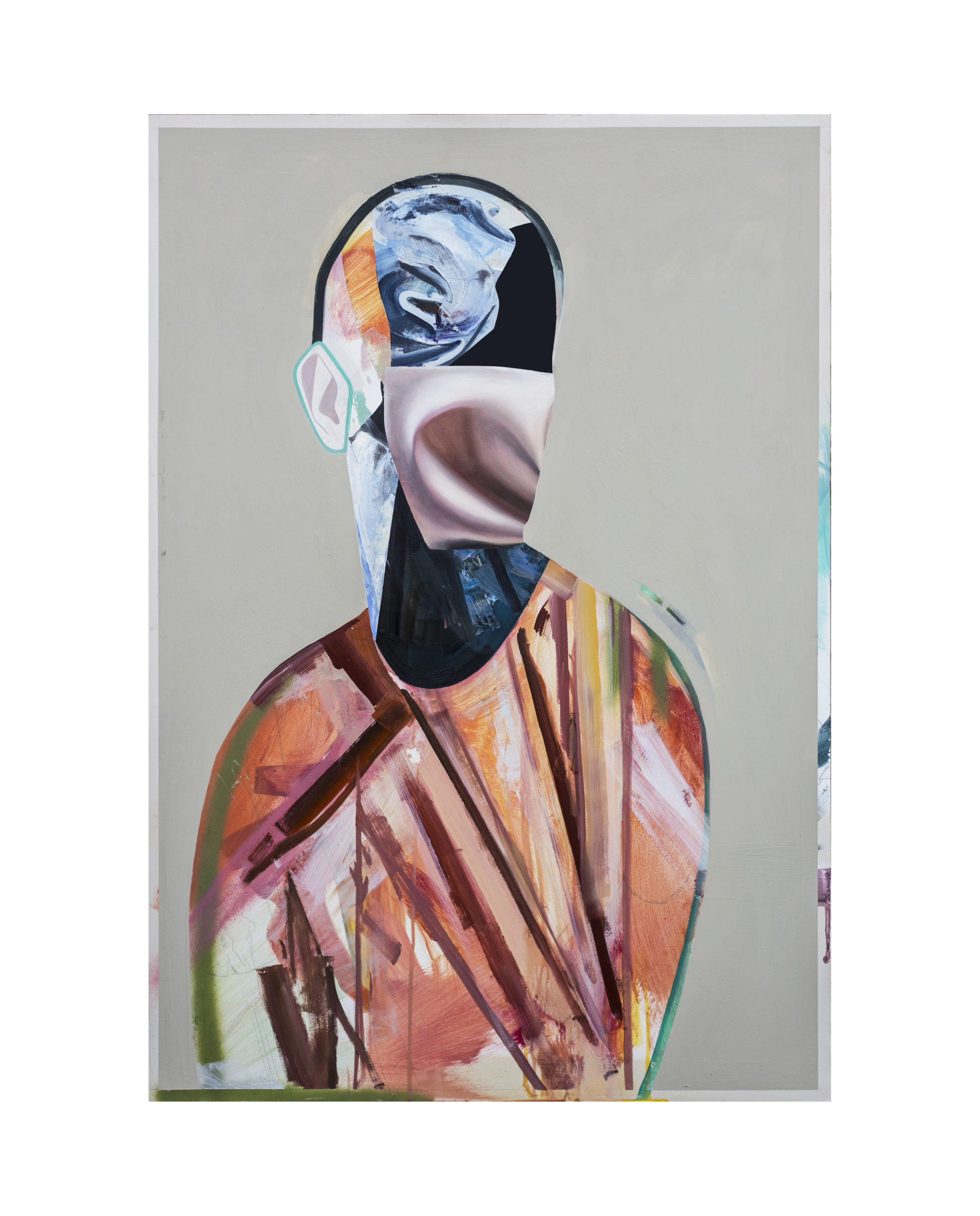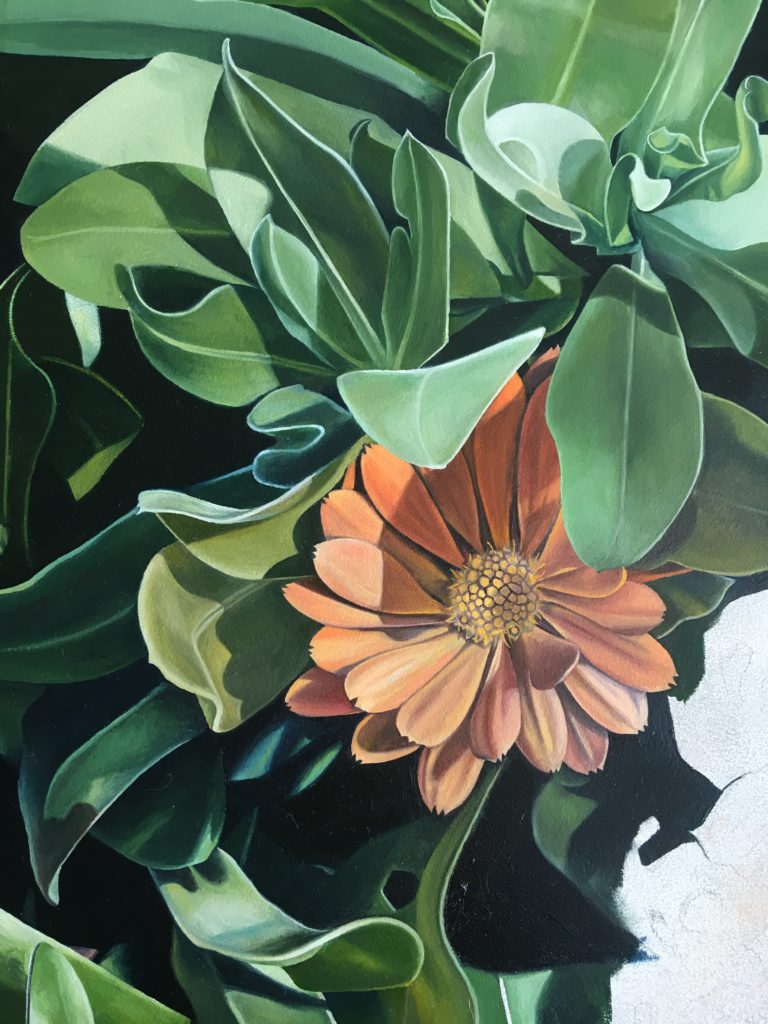
David Booth is a painter based in Dublin. Having graduated with a BFA, David has gone on to produce award winning work which has been exhibited both nationally and internationally. In his work he deconstructs traditional notions of portraiture and has developed his unique style which combines abstraction and hyper-realism.

Where did you spend lockdown?
I spent this time at home.
Did you have access to a studio during this time? If not, how did you continue to create work?
I did have access but decided to remain at home, as my studio is in the city centre. I moved some essentials to my living room but soon settled in the kitchen where the light is at its most consistent. I have been working from there.

Can you talk through your art making process?
Initially the instinct was to get busy, without too much agenda, just making sure to do a bit every day, somedays a lot, somedays very little. From piece to piece, my approach has differed.
I initially started with making a number of small abstract works. These I have hung about the house, and from day to day I would mark them and move them. These are ongoing and a nice exercise. Another piece I have begun working on is a still life of a specific orange wildflower, a candula daisy. Its radiant orange has become a noticeable and repetitious feature where I live.

During this period the instinct was to anticipate and counter the proclivity towards procrastination. I lead with a more playful approach, and quickly a number of pieces where active, this gave me something to work on everyday.
From then I had a good variation of pieces to jump between, some heavily time consuming, requiring a fastidious approach, others less demanding where I could be more more free and loose. Before Covid I was playing with paper collage. I carried over some of these explorations into the lockdown, I found that to be a good mechanism for incentiving new work.
I have sometimes used time for structure and sometimes not, there is a convenience to this.
Did you experiment with any new materials or methodologies?
I began using some of Goldens Fluid acrylics in notebooks and eventually on gessoed boards. They are very nice to work with as I am used to oils and waiting for layers to dry. These particular paints have a perfect viscosity and retain the richness of colors.
One of the pieces I brought home to finish was a portrait of a friend Maho. In this there was a lot I had not yet resolved. One of the areas was her braided hair. I had an idea of how I wanted them to look. My initial approach was to map out everything very meticulously. Soon I came to learn that I was best adjusting and making changes as I worked, over planning was impeding my progress and hindering my invention. Some processes and methodologies you know, but sort of unlearn. A primary one is, to get started, once you begin problems and solutions are in abundance.

Given the limitations and restrictions of the last few months, did your art making process change at all? If so, do you think this will continue to change how you will make art going forward?
My primary focus over the last few months has been finishing works, because of this, my approach has not changed too much. I have begun using my notebooks a lot more to test out compositions and ideas. My aim always is to not pick up any pernicious habits, refreshing my attitude day to day.
I believe because I moved my operation home, it somewhat limited my aspirations to have a looser approach. Primarily I can make a lot more mess in the studio but the studio is also a place I can better approach ideas and their potential value.

Do you have any upcoming projects?
Previous to the quarantine, at the beginning of March I had been working on a commissioned piece. This painting is a sort of response to a Russian novel called the ‘The Master and the Margarita’. At the start of March, when bringing it home I believed it was 90 percent done, upon hanging it on my living room wall, many possibilities of where the work could go became apparent. This was the first time I had seen the work outside of the studio and highlights how seeing it out of the environment in which it was made gives an important perspective. I will finish this soon I hope.
Later in the year or early next year I will have a second show at the Hang Tough Gallery, Dublin.
All photographs were provided by David Booth. To see more of David’s work visit his website and Instagram.
